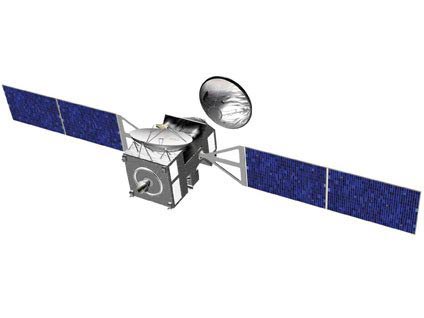
Is there life on Mars? That question could be answered by five scientific instruments that have just been selected to fly aboard the first ExoMars mission to the red planet in 2016. A joint venture of the European Space Agency (ESA) and NASA, ExoMars is short for Exobiology on Mars and is expected to involve at least two missions to the planet.
The five instruments were selected from 19 proposals that were submitted in January 2010. They include three different infrared detectors that will scan the Martian atmosphere for low-concentration molecular constituents as well as dust and water vapour.
‘That most important of questions’
Mission scientists are particularly interested in mapping levels of methane in the Martian atmosphere. “Mapping methane allows us to investigate further that most important of questions: is Mars a living planet, and if not, can or will it become so in the future?” explained David Southwood, ESA director for science and robotic exploration.
The gas was first detected on the planet in 2003 by ESA’s Mars Express mission and its presence was then confirmed by NASA scientists. Martian methane is of particular interest to exobiologists because the gas should be destroyed by solar radiation. Significant amounts of methane could therefore mean that the gas is being produced by living organisms – just as it is on Earth.
The craft will orbit about 400 km above the Martian surface and will also include a camera that will take high-resolution 3D images and will be able to focus in on features of interest as they are discovered. The fifth instrument is a wide-angle multi-wavelength camera that will take global images of Mars in order to direct the activities of the other four instruments.
Roving on Mars
Accompanying ExoMars TGO on its voyage to Mars will be a small ESA-supplied landing craft that will descend to the planet’s surface. The lander was to contain a suite of geophysical and atmospheric experiments, but money problems have forced the ESA to scale back its plans. Instead, the lander is now planned as a “demonstrator” that will contain a limited number of instruments and will inform the development of landing technology for the second ExoMars mission, which is scheduled for 2018.
The main aim of the 2018 mission is to place a rover vehicle on the surface of Mars. The rover will be equipped with a drill for acquiring geological samples, which could be returned to Earth by further joint ESA/NASA missions planned for the 2020s.
Meanwhile, ESA has announced that it has found up to €470m to spend on a “medium-size” scientific mission that will launch in 2022. The agency has issued a call to space scientists to submit proposals for the mission that are in line with ESA’s Cosmic Vision plan for the future of space science in Europe.



